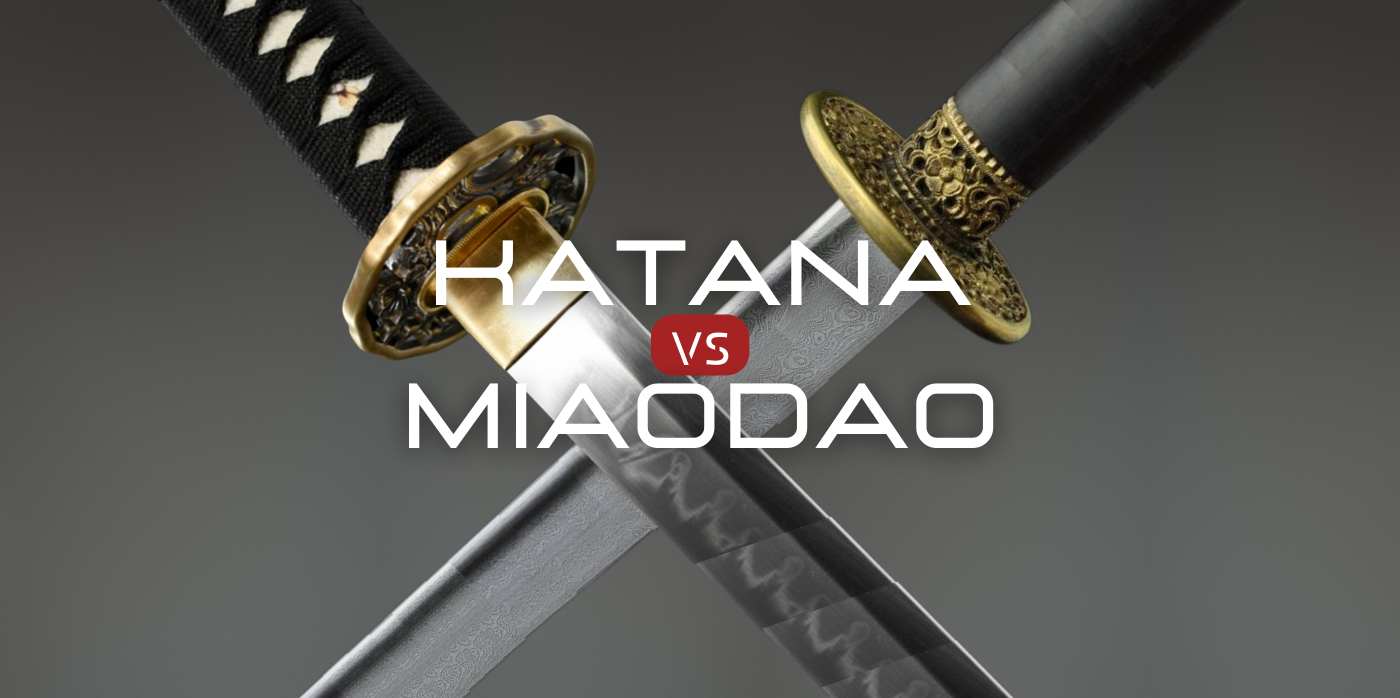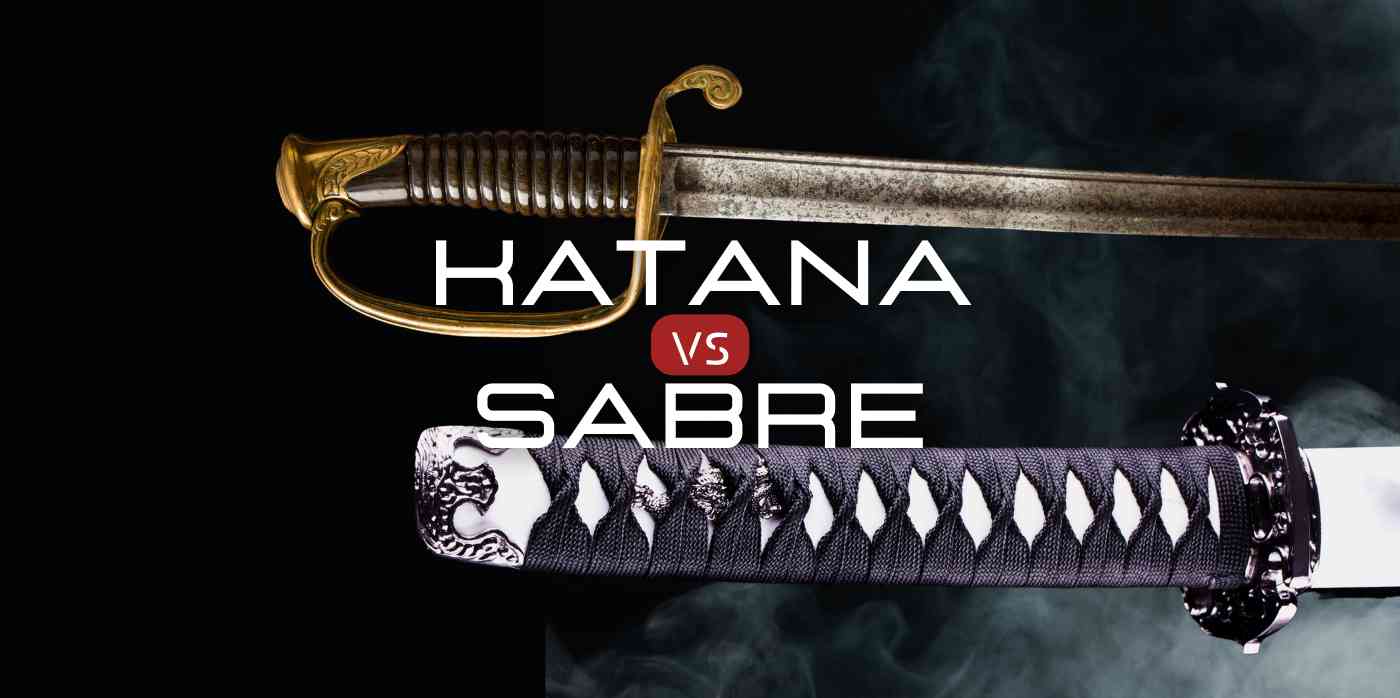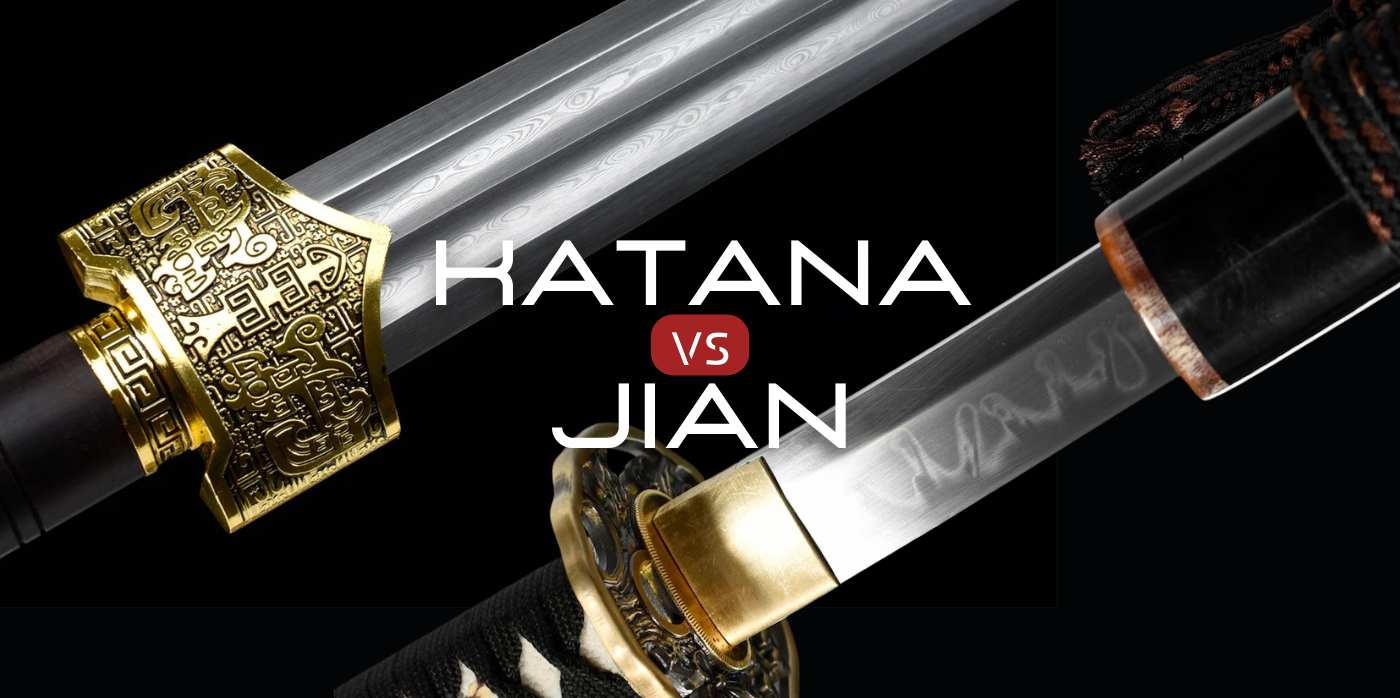Across the pages of history, swords have held an esteemed position as the weapon of choice for warriors and samurais alike. Among this illustrious array of blades, the Miao Dao and Katana emerge as two iconic and formidable representatives, boasting distinct lineages and exceptional traits that set them apart. In this in-depth comparison, we'll explore the historical origins, design features, combat techniques, and cultural significance of both Miao Dao and Katana, shedding light on which blade truly reigns supreme on the battlefield.
1. The Origins of Miao Dao and the Katana
The Miao Dao (苗刀), or "Sprout Saber," traces its roots back to ancient China during the Ming dynasty (1368-1644). This impressive sword was initially crafted for the Miao people, an ethnic group residing in southern China. As the Miao Dao gained popularity, it found its way into the hands of Ming dynasty soldiers due to its exceptional effectiveness in combat.
The Miaodao boasts an elegant design, characterized by a long, curving blade that gradually widens from hilt to tip. With a single-edged blade, the Miao Dao often features a fuller or groove running along its length, enhancing its balance and reducing overall weight.
The Katana, with its deeply curved blade and elongated grip, is the quintessential symbol of the Samurai, the warrior class of feudal Japan. Its construction required immense skill and knowledge, resulting in a weapon that combined functionality, durability, and a unique beauty. The Katana's remarkable sharpness, balance, and weight distribution made it a fearsome weapon in battle, garnering immense respect in the martial arts world even today.
Summary:
- The Miao Dao, a two-handed Chinese sword, is renowned for its long and straight blade.
- It originated in the Republican era of China and is adept at both slashing and thrusting attacks.
- The Katana is a symbol of the Samurai and is known for its sharpness, balance, and weight distribution.
- It required significant craftsmanship, resulting in a combination of functionality, durability, and beauty.
2. Katana Craftsmanship vs Miao Dao
The process of creating a Katana is a meticulous one, steeped in tradition and requiring immense skill and patience. Blacksmiths fold the steel numerous times to create a weapon of great strength and flexibility, featuring a distinct curved blade and an exquisitely crafted hilt. The creation of the 'hamon,' or temper line, on the edge of the blade is a result of a unique differential hardening process, giving each Katana a unique aesthetic.
On the other hand, the crafting process of a Miao Dao involves careful shaping and tempering of the long, straight blade. Unlike the Katana, the Miao Dao does not typically feature a temper line. However, the steel is often heat-treated to create a durable, resilient blade capable of withstanding powerful blows.

3. Katana Parts vs Miao Dao
3.1 Blade
Both the Katana and Miao Dao have blades renowned for their sharpness and durability. The Katana's curved blade is optimized for swift, powerful cutting movements, while the Miao Dao's straight blade is suitable for both slashing and thrusting attacks.
3.2 Guard
The guard or tsuba of a Katana is often a work of art in itself, intricately designed and made from a variety of materials. It serves to protect the wielder's hand during combat. The Miao Dao, in contrast, features a simpler, round or oval guard, designed primarily for functionality rather than aesthetics.
3.3 Handle
The handle or tsuka of a Katana is designed to accommodate two hands, wrapped in ray skin and cord for a secure grip. The Miao Dao's handle is also long enough for two-handed use, typically in wood.
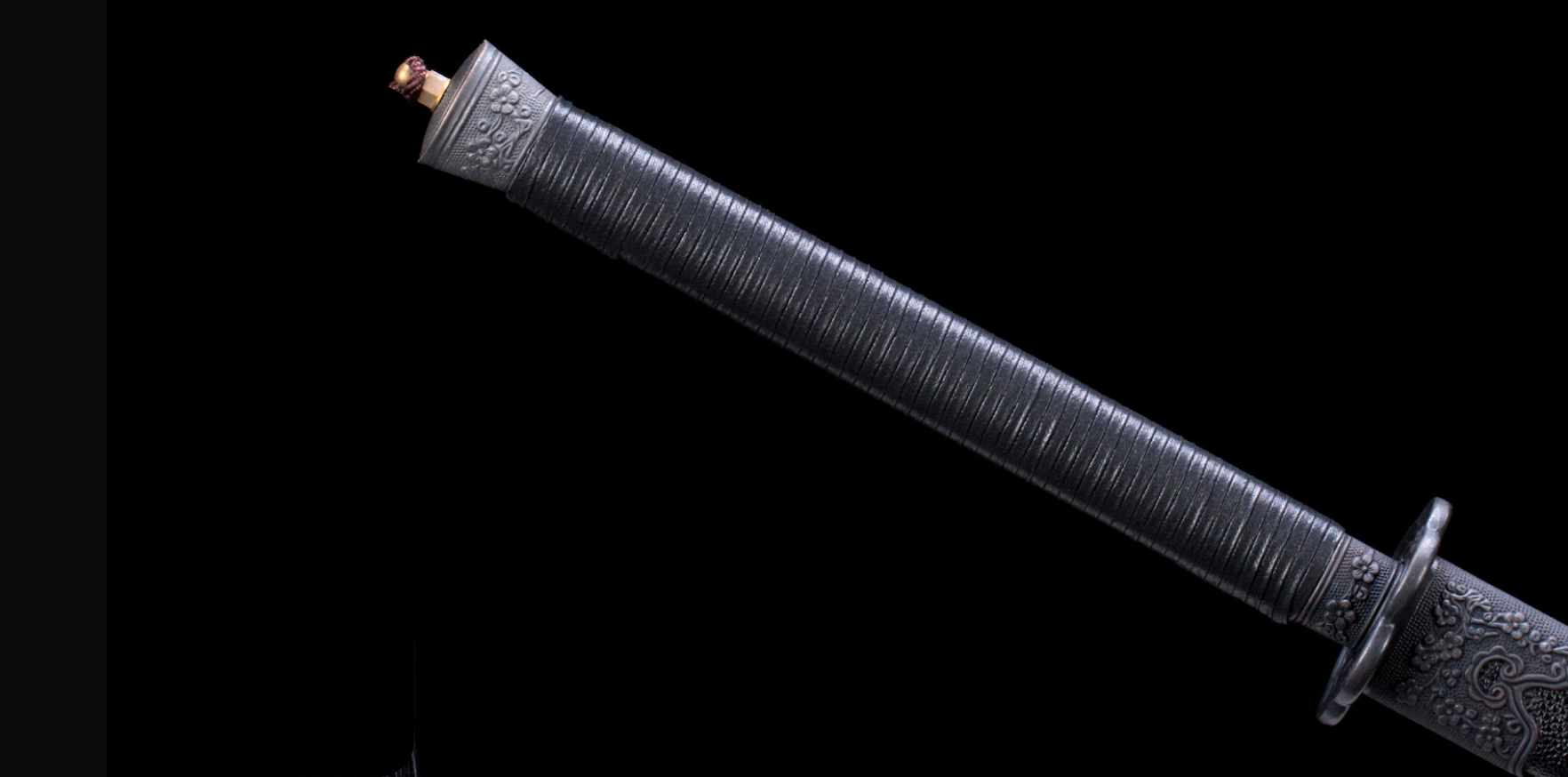
4. Katana Characteristics vs Miao Dao
4.1 Blade Design
The Katana's blade design is a defining feature of this weapon, known for its distinct curvature, which facilitates swift, powerful cuts. On the contrary, the Miao Dao's blade is straight and typically longer, offering a balance between slashing and thrusting attacks.
4.2 Weight of the Blade
The Miao Dao sword is relatively heavier than a Katana.
- Average weight of a Miao Dao: from 3.1 lbs to 4.0 lbs (1.4 kg to 1.8 kg)
- Average weight of a Katana: from 2.4 lbs to 3.1 lbs (1.1 kg to 1.4 kg).
4.3 Sharpness
The Katana is famed for its "hamon," or temper line, showcasing the blade's edge sharpness. The Miao Dao, while also sharp, doesn't typically feature a pronounced temper line.
4.4 Grip
The Katana's handle is designed for a two-handed grip, offering excellent control and stability. The Miao Dao's handle is also long enough for two-handed use, typically in wood it can feature a cord wrap for enhanced grip and control.
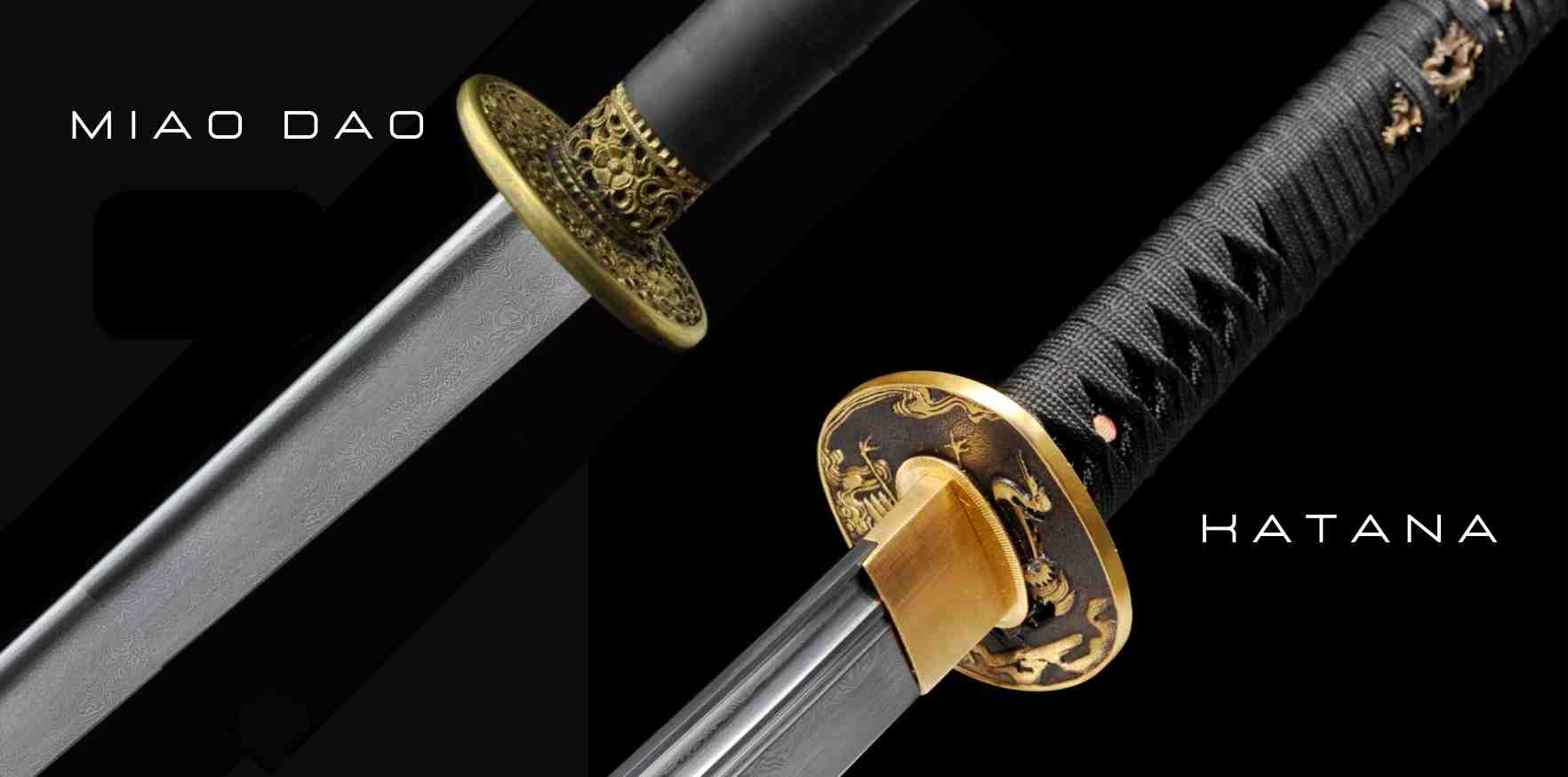
4.5 Balance
Both the Katana and Miao Dao have their balance points closer to the hilt, essential for control and rapid movements. However, due to its longer blade, the balance point of the Miao Dao might be slightly further along the blade.
4.6 Durability
The Katana's durability is a testament to the unique Japanese sword-making process, which involves folding the steel multiple times. The Miao Dao, while also durable, does not typically undergo a similar process, and its strength depends significantly on the quality of the steel used and the blacksmithing techniques employed.
4.7 Reach
The Miao Dao's longer blade bestows a significant advantage in terms of reach compared to the Katana. This extended reach becomes a crucial strategic asset on the battlefield, empowering the wielder to engage adversaries from a safer distance, effectively widening their attack range while keeping potential threats at bay.
5. Katana Combat Style vs Miao Dao
The combat style associated with the Katana is reflective of its design and historical usage, emphasizing swift, powerful cuts, and is seen in various Japanese martial arts, including Kenjutsu, Iaido, and Kendo. The Miao Dao's combat style, is largely inspired by the Chinese martial art of Wushu.
Katana's powerful cutting force and swift movements might provide an edge in close-quarter combat, while the Miao Dao's longer reach and versatility could prove advantageous at a longer distance.
6. Katana Maintenance vs Miao Dao
Maintaining a Katana involves careful cleaning, oiling, and periodic inspection to ensure the blade's integrity. The same is true for a Miao Dao; regular maintenance is required to keep the sword in optimal condition.
7. History and Origin of the Katana vs Miao Dao
The Katana, a symbol of the samurai culture, has a rich history dating back to the Kamakura period in Feudal Japan. Its evolution is closely linked to the changes in Japanese warfare and samurai philosophy.
The Miao Dao is a relatively recent Chinese sword, tracing its origins back to the Republican era in China. It was designed as a response to the close combat warfare of the period and was named after the sprouts of a sprouting willo: 'Miao'.
To sump-up:
- These swords, while different in many aspects, share similarities due to their Asian origins and the warrior cultures they were born from.
- The Miao Dao is a two-handed Chinese sword known for its long, straight blade.
- It originated in the Republican era of China and is adept at both slashing and thrusting attacks.
- The Miao Dao's handle is also suited for two hands and features a cord wrap for better grip.
- The Miao Dao, with its longer blade, provides greater reach than the Katana.
- Miao Dao's combat style, part of Wushu, combines slashing and thrusting techniques.
- Katana may have an edge in close combat, while Miao Dao may prove advantageous at a longer distance.
Conclusion
In comparing the Katana and Miao Dao, we can appreciate the unique cultural histories, craftsmanship, and martial arts associated with these remarkable swords. While they each have their distinctive features and strengths, the choice between a Katana or Miao Dao would depend on the specific needs and preferences of the wielder.



